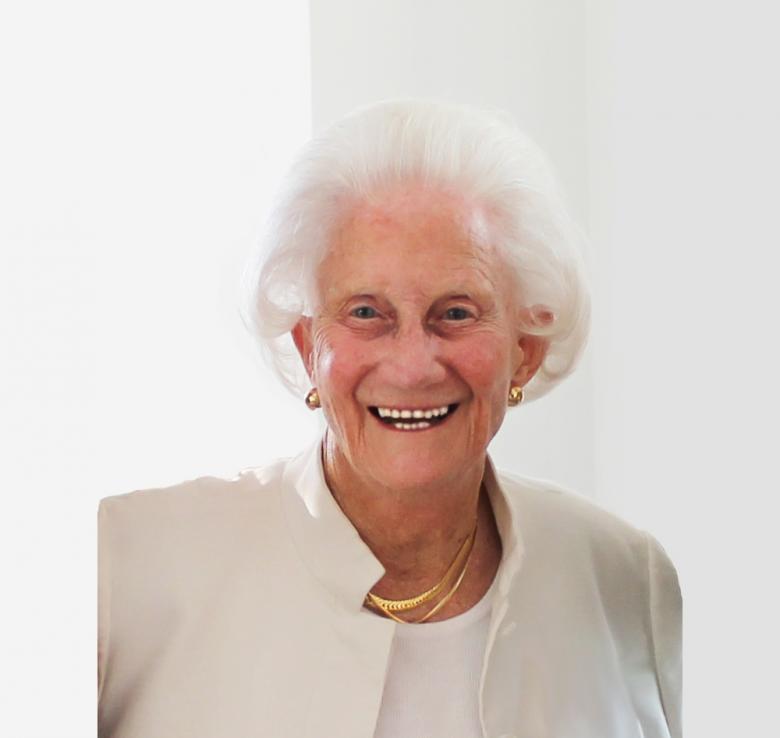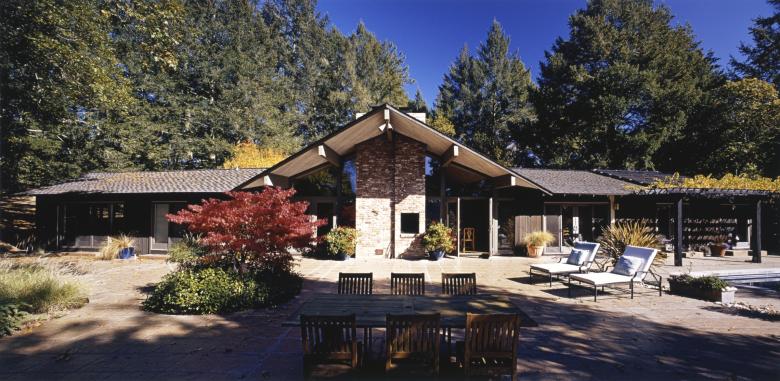Beverly Willis, 1928–2023
John Hill
3. October 2023
Beverly Willis in 2015 (Photo: Wanda Bubriski)
Beverly Willis, the artist, self-taught architect, filmmaker, and untiring proponent of women in architecture, died on October 1, 2023, at the age of 95.
Beverly Ann Willis led a long and fascinating life with a meandering trajectory toward architecture. Born in Tulsa, Oklahoma, in 1928, her parents divorced in the midst of the Great Depression, when she was just six years old, leading her and her brother to be placed in an orphanage. Willis reunited with both of her parents as a teenager: her father in Illinois and mother in Portland, Oregon. There, at Oregon State University, she studied aeronautical engineering but dropped out after two years, finding her way to Hawaiʻi and earning a BFA from the University of Hawaiʻi in 1954.
Abbott and Roxana Robertson country house, St. Helena, California, 1960 (Photo: Library of Congress)
After working as an artist in Honolulu, where she specialized in murals, frescoes, and multimedia installations, Willis moved back to San Francisco, where she had lived briefly between Oregon and Hawaiʻi. Willis had started to venture into the realm of architectural commissions in Honolulu, and once in San Francisco she was determined to focus on architecture and design projects. Her first commission came in 1960 with the Robertson Residence; it was designed for a client with multiple sclerosis who used a wheelchair and incorporated numerous design features that would become standard decades later with the Americans with Disabilities Act (ADA).
Beverly Willis at a construction site in 1982 (Photo: Library of Congress)
In 1966, Willis earned her architectural license in the State of California, even though the California chapter of the American Institute of Architects (AIA) barred her from taking the professional license exams, citing that she was ineligible because she had worked only with and not for other architects. She was able to overcome their blockade with the help of Hawaii Senator Daniel Inouye and California Governor Pat Brown. Subsequently, her eponymous firm grew in size, as did the size of the commissions. Considered the crowning work in her portfolio is the San Francisco Ballet Building, an eight-story building in the city's Civic Center. “The monumentality of the mass is softened by transparent layers,” Willis wrote in her 1997 book Invisible Images: The Silent Language of Architecture, “that reveal an inner space of creative possibility, awaiting the birth of dance.”
San Francisco Ballet Building, Civic Center, 1983 (Photo: Library of Congress)
Most of the above information comes from Willis's profile in the Pioneering Women of American Architecture, a project of the Beverly Willis Architecture Foundation (BWAF) with “profiles of fifty women who have made important contributions to American architecture.” Willis founded the nonprofit BWAF in 2002, disappointed that women were not represented in books of architectural history. In the two decades since, it has drawn attention to women in architecture through, among other things, Built by Women, a series of maps showcasing buildings designed by women; New Angle: Voice, a podcast on pioneering women in American architecture; and the BWAF Film Series, which acknowledges and celebrates women’s achievements. One of the last, Unknown New York: The City That Women Built (trailer below), was directed by Willis in 2018, allowing the then-90-year-old to add “filmmaker” to her long and multifaceted resumé.



